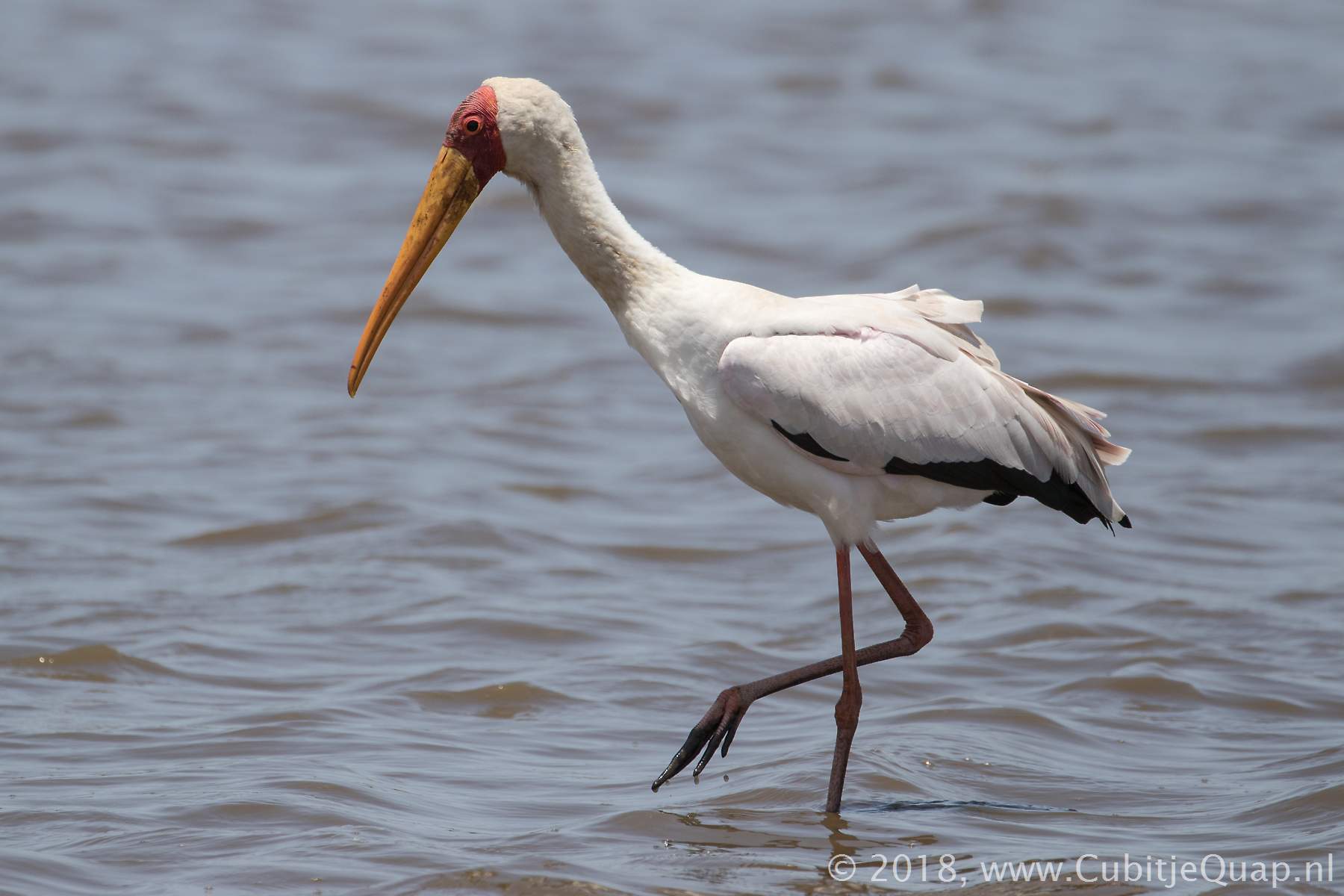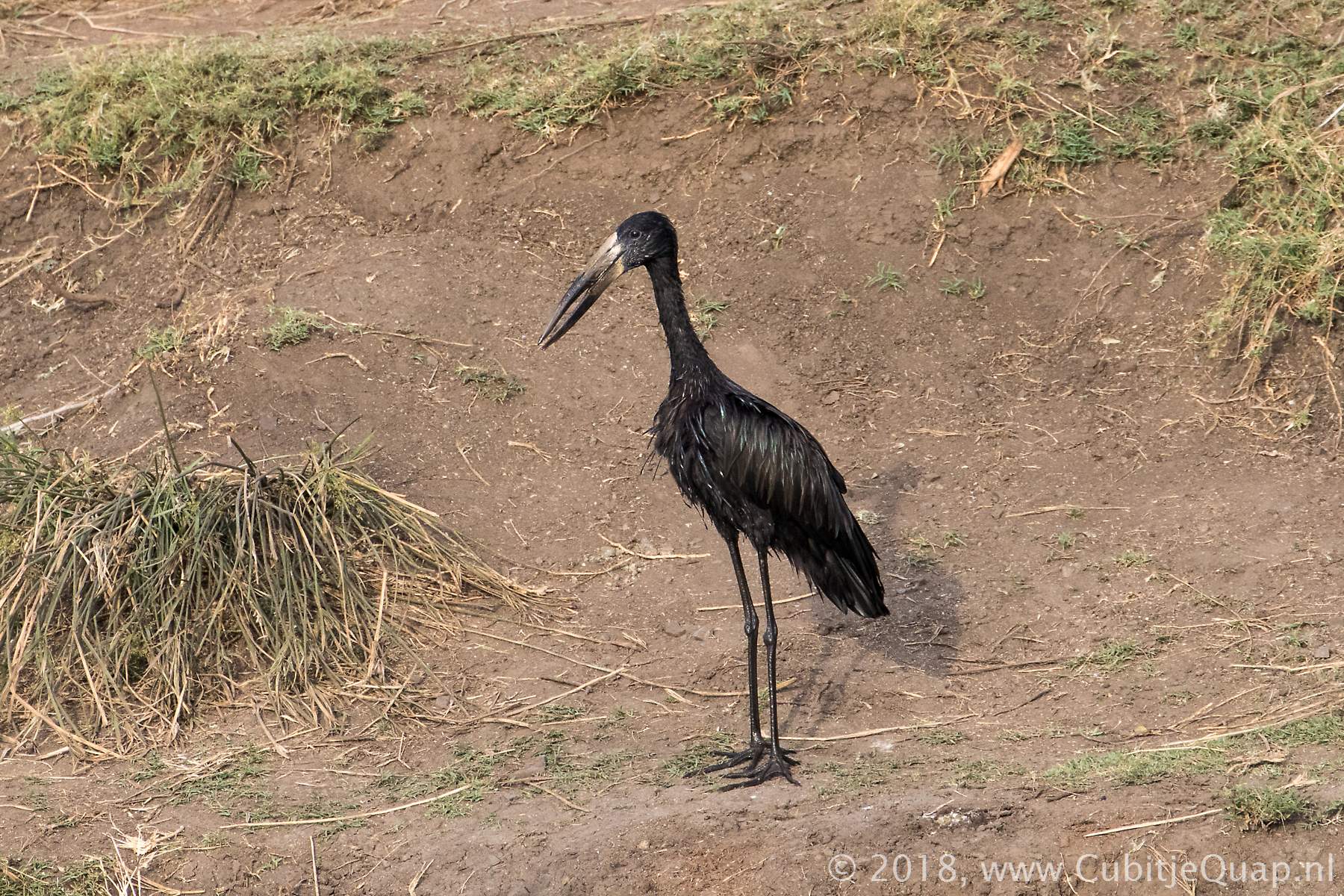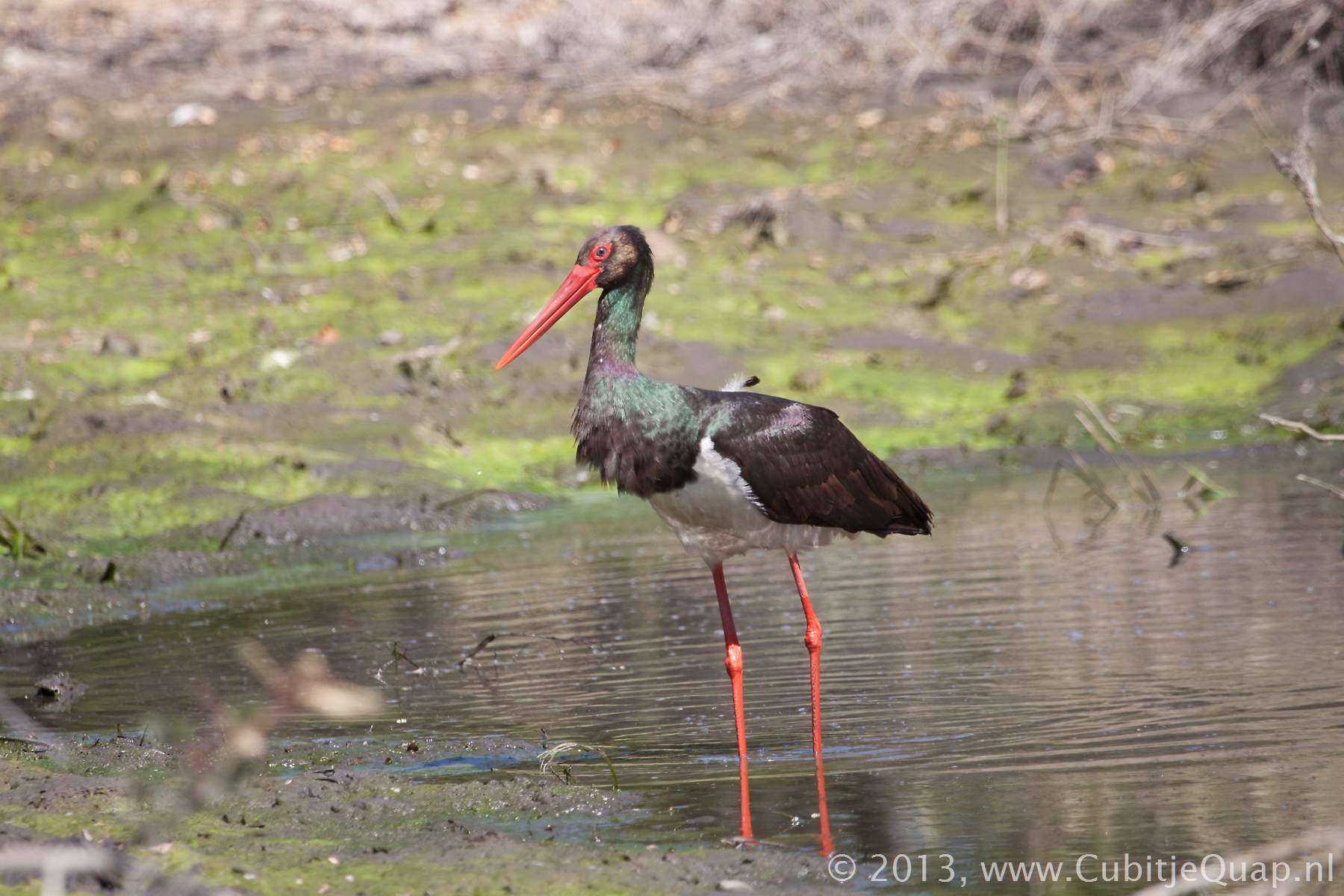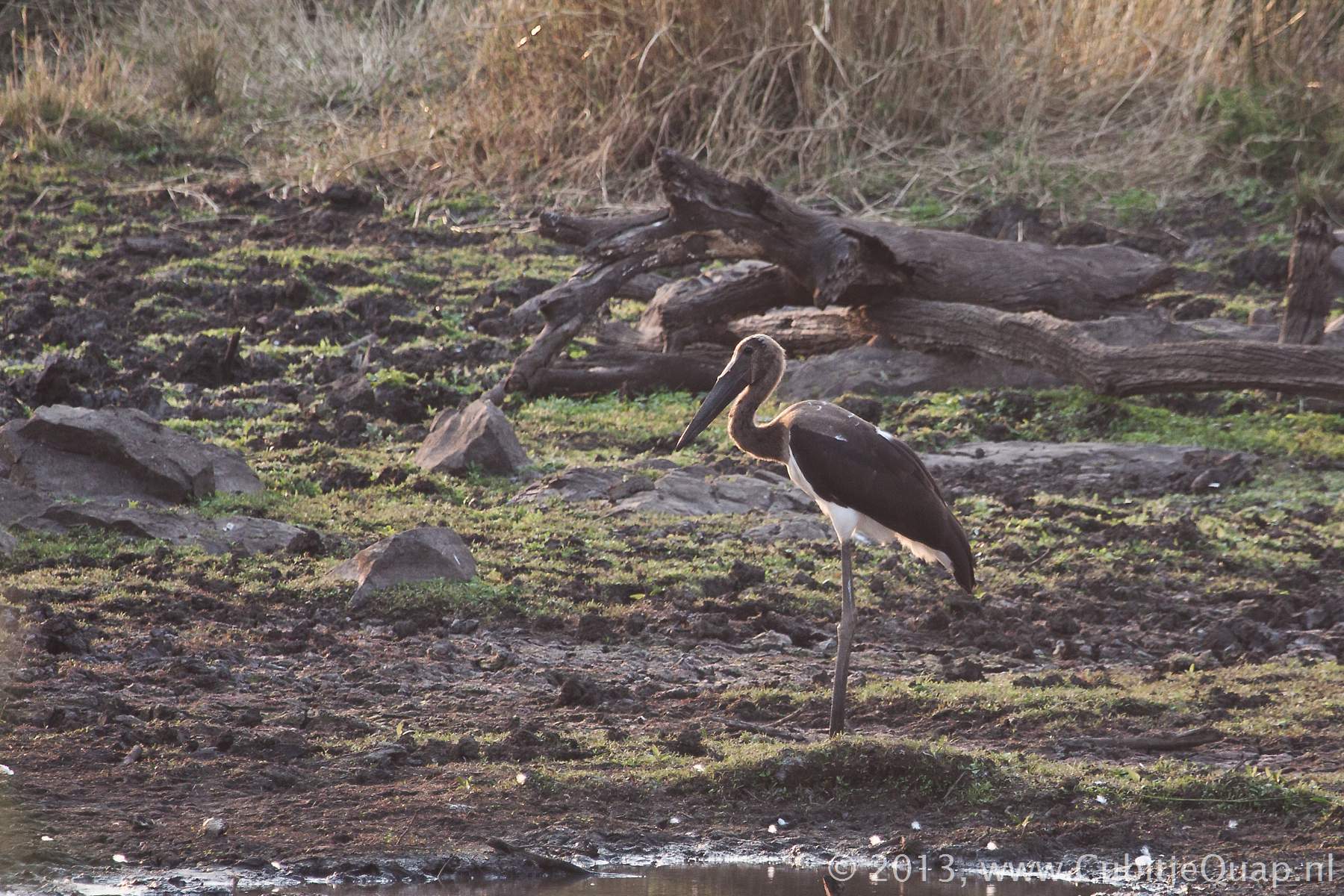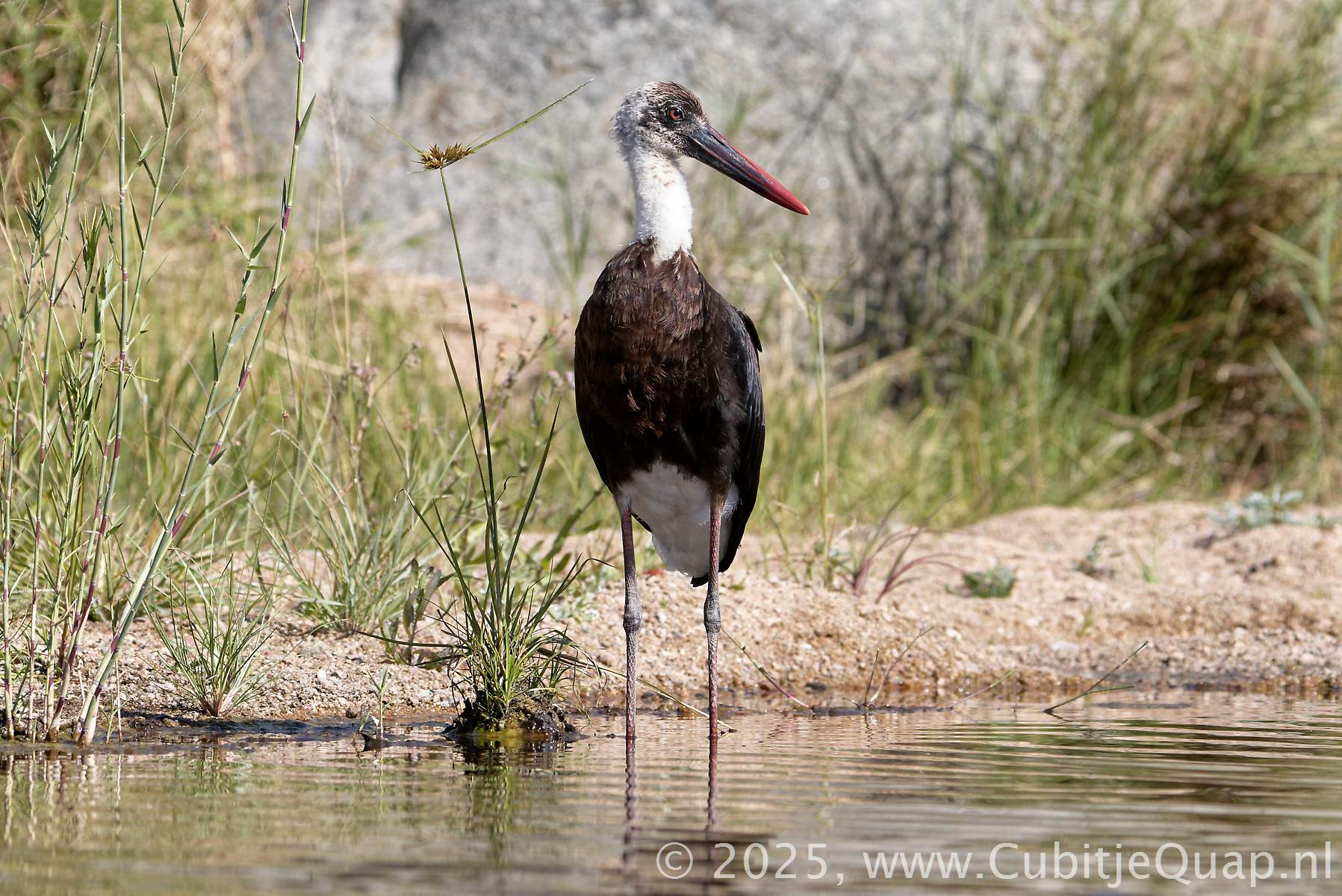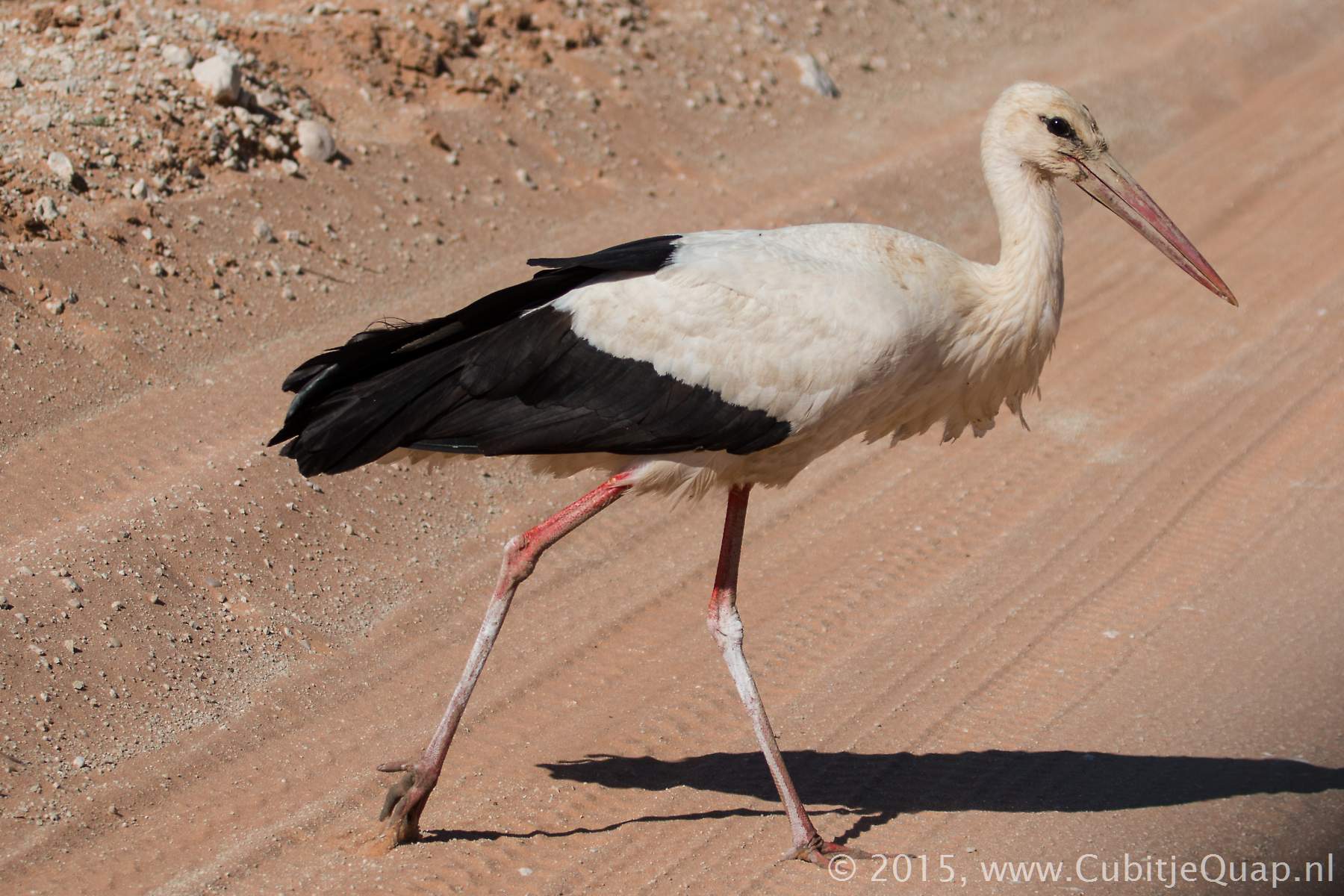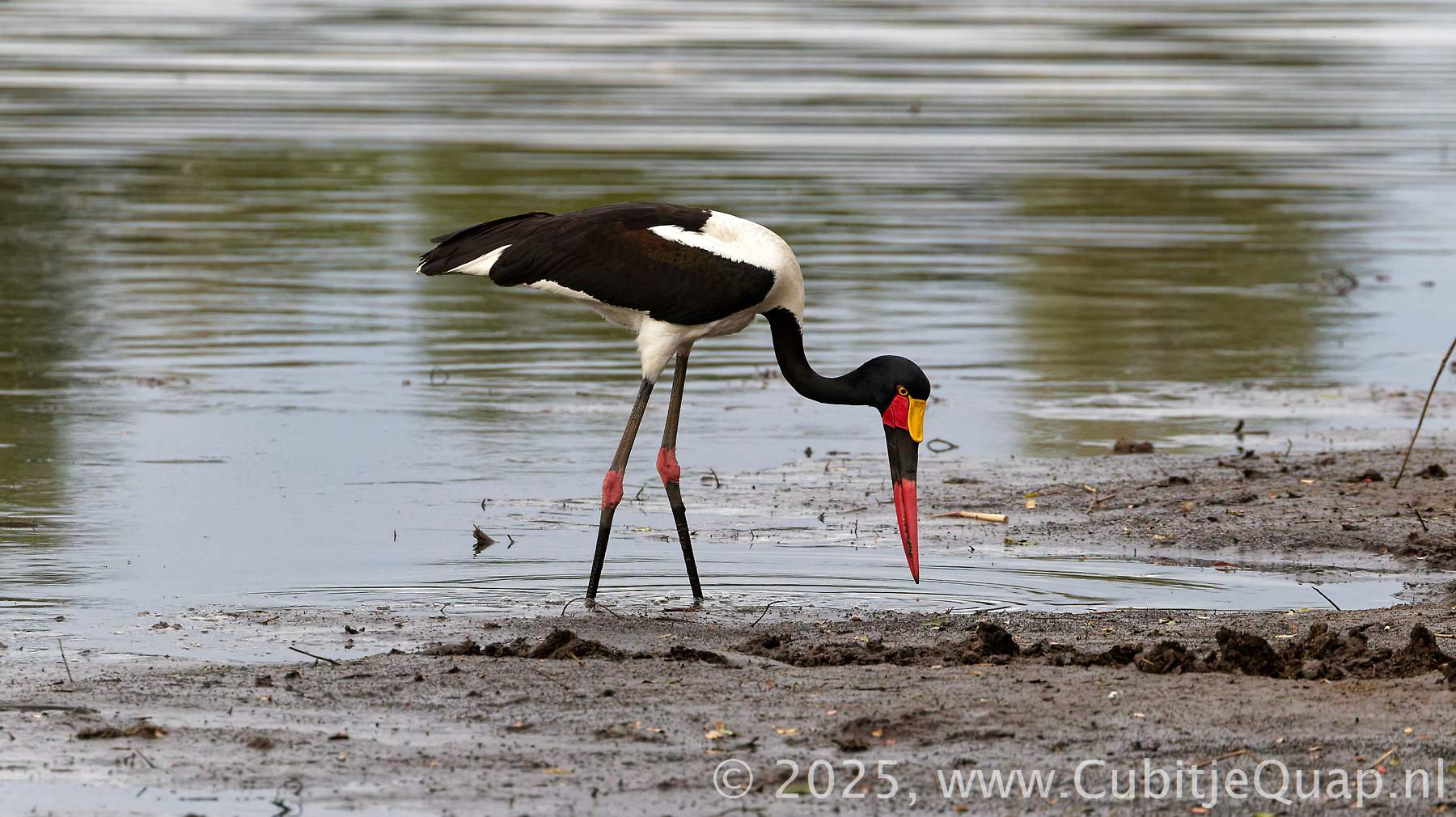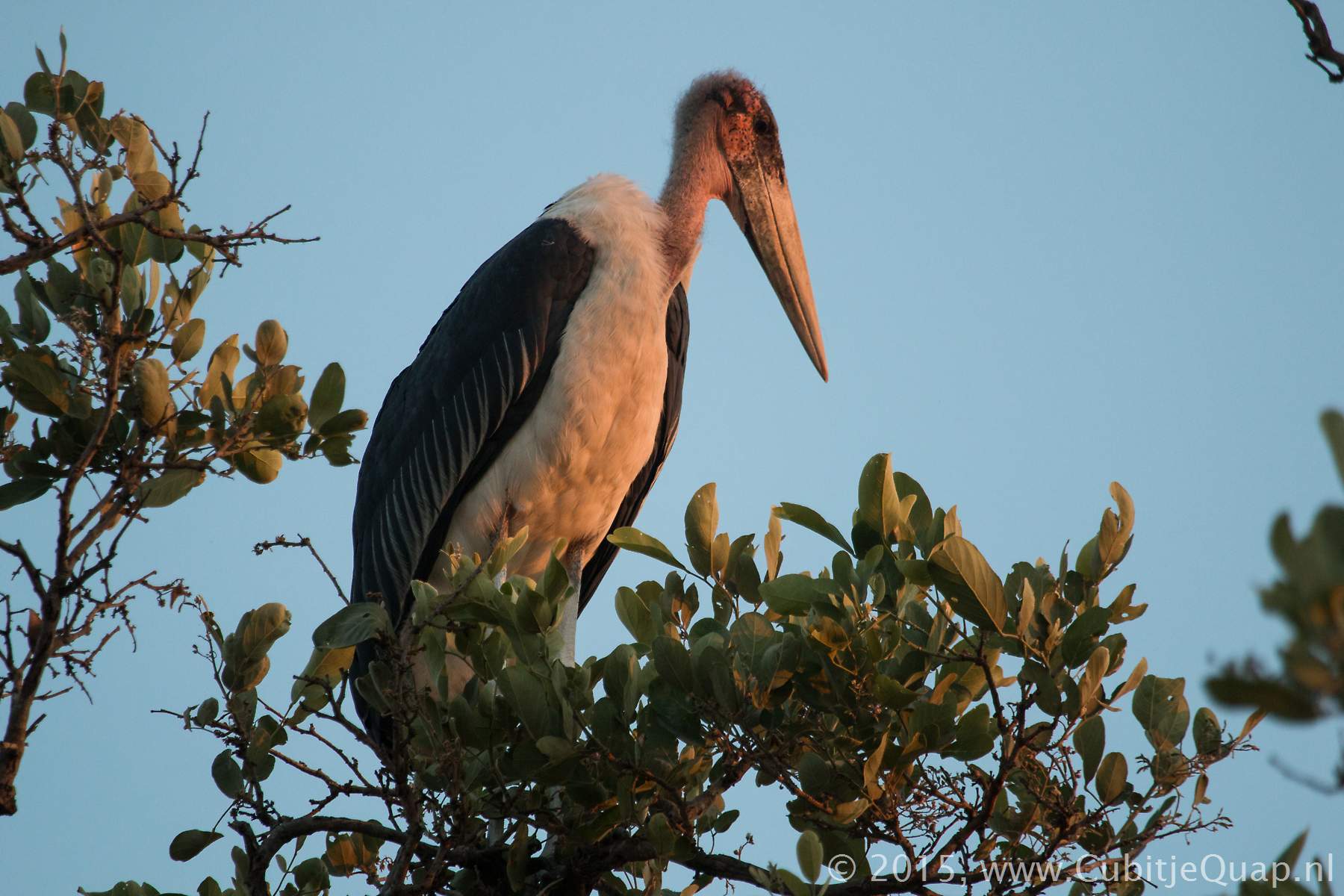Storks Information page
Description
Large, long-billed, long-legged birds, mostly associated with aquatic habitats. Their syrinx is poorly developed, therefore most species only make croaks, honks, hisses or weak whistles. Bill-clattering is an important mode of communication at the nest.Storks tend to use soaring, gliding flight, which conserves energy, this requires thermal air currents. Storks are heavy, with wide wingspans. All except the marabou stork fly with the necks and head outstretched.
They are exclusively carnivorous, eating a range of invertebrates. Prey is detected primarily by visual means , except in the yellow-billed stork who often uses touch. They often look for prey wading in the water. The openbill is adapted for eating snailes, it can use the tip of its bill as 'fingers' to manupulate the snail from its protective shell. The four species in the Ciconia family are primariluyly insectivorous.They are monogamous and they nest as isolated pairs or colonially, building large nests in trees, on cliffedges or similar positions. They lay 2 - 4 whitish eggs. Both sexes incubate and care for the chicks.
Scientific names
Anastomus = coming to a point, in reference to the billCiconia = stork
Ephippiorhynchus = saddle-billed
Leptoptilos = thin feathers
Mycteria = nose or snout
Storks
Interesting links
Wikipediafatbirder.com

